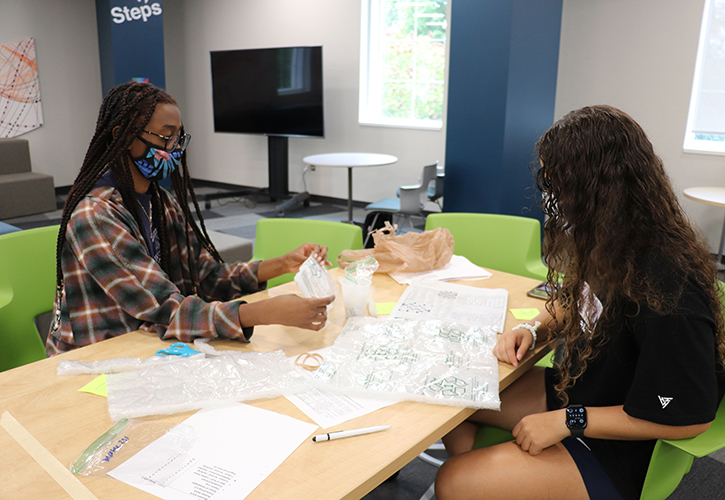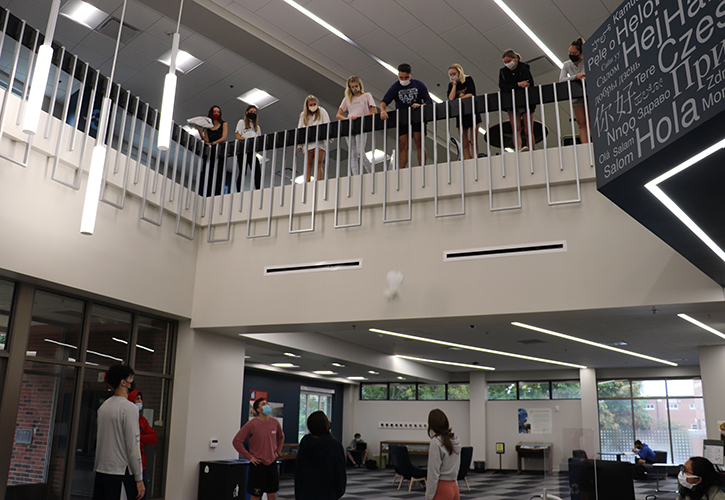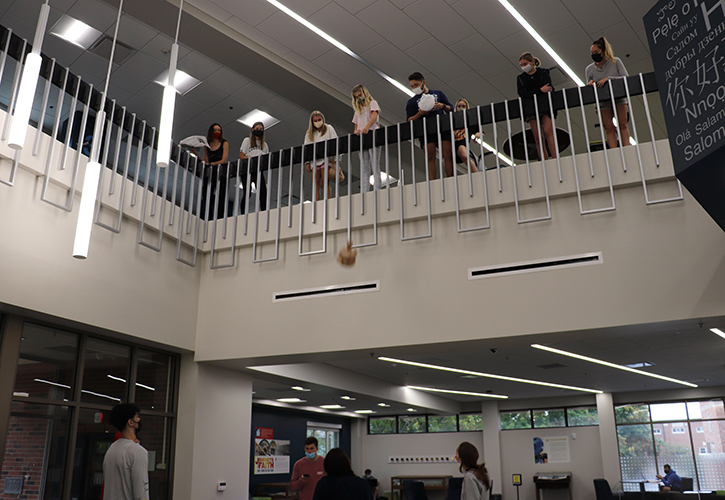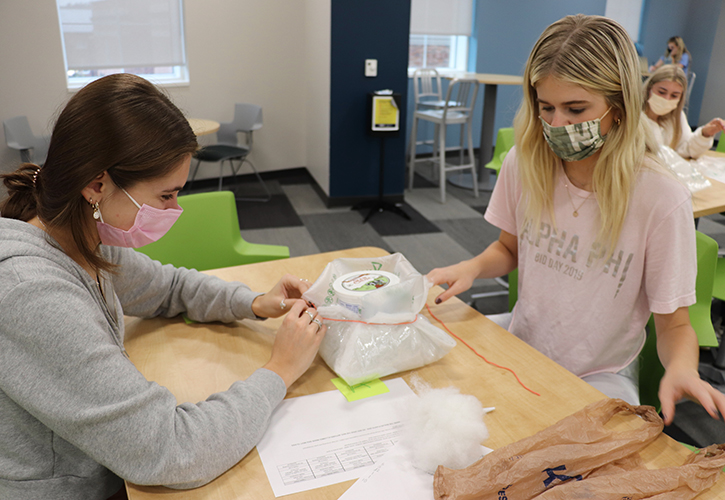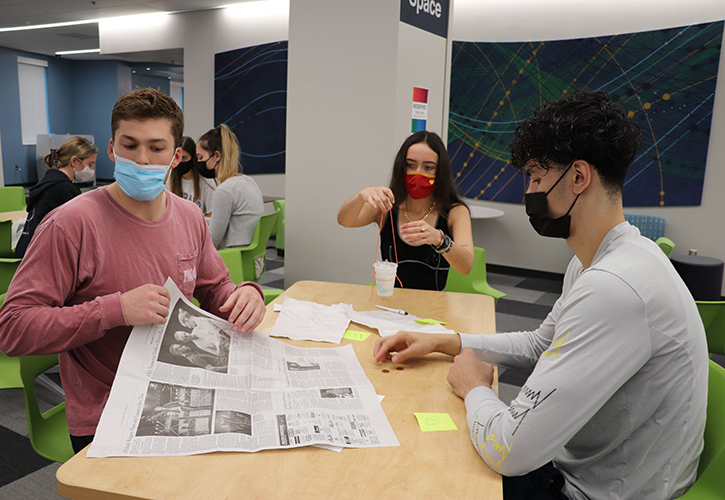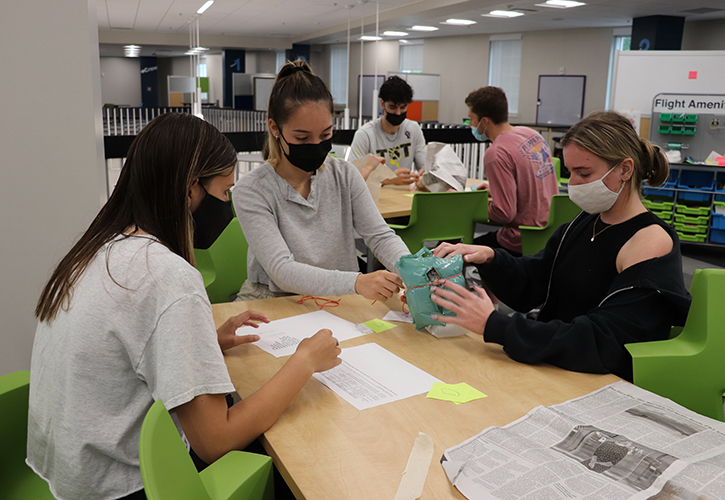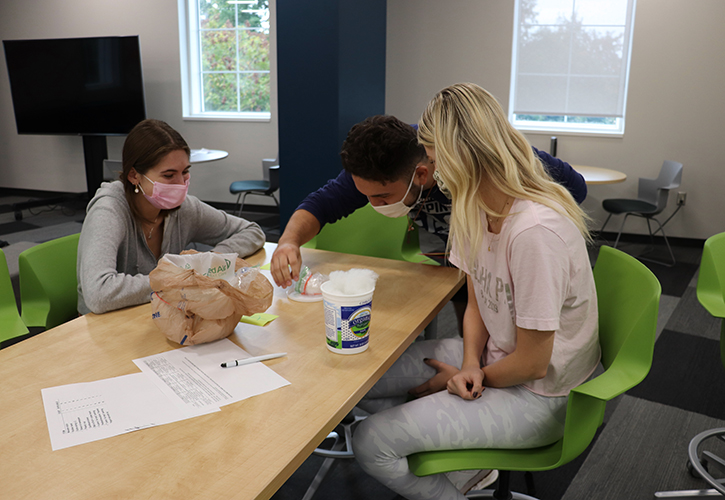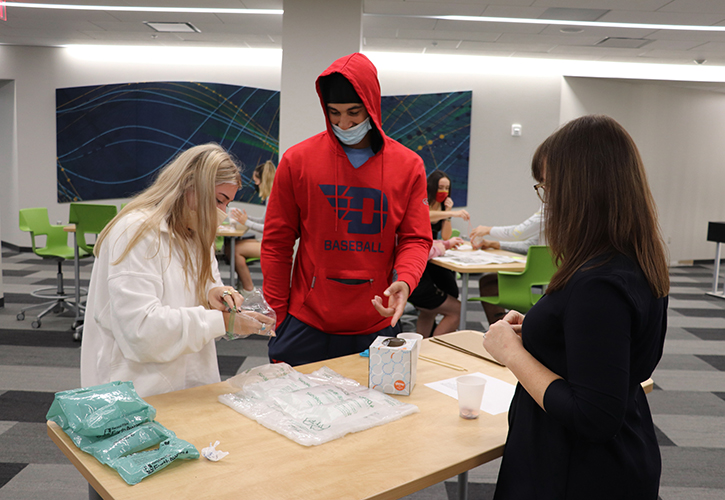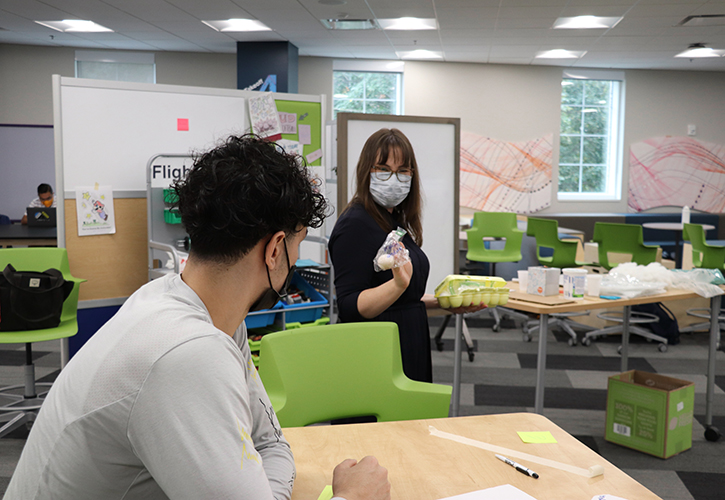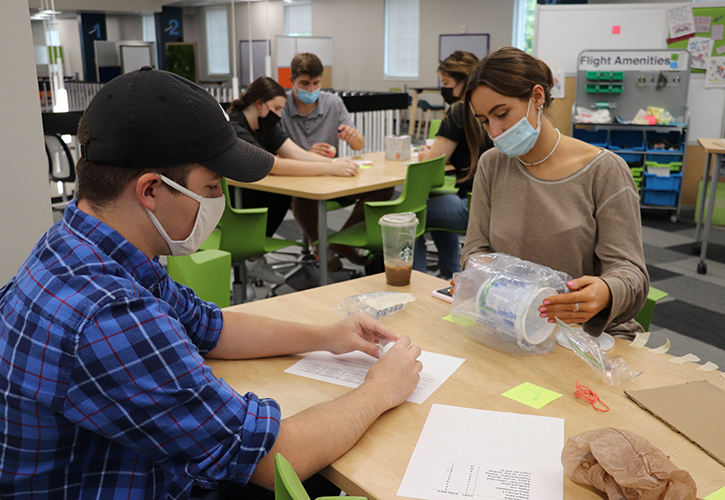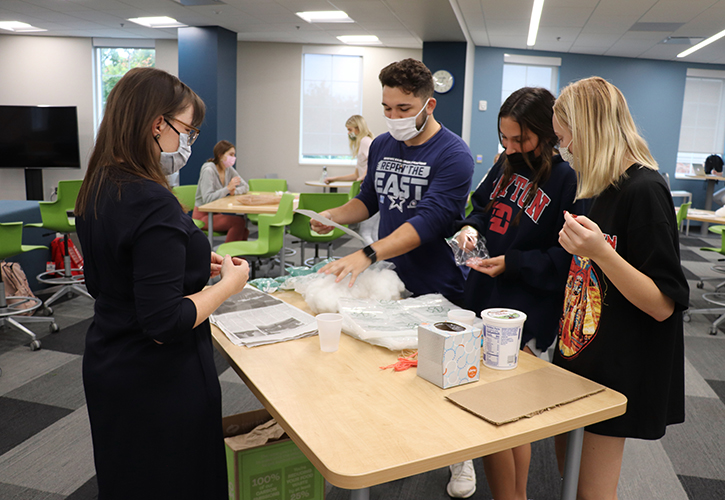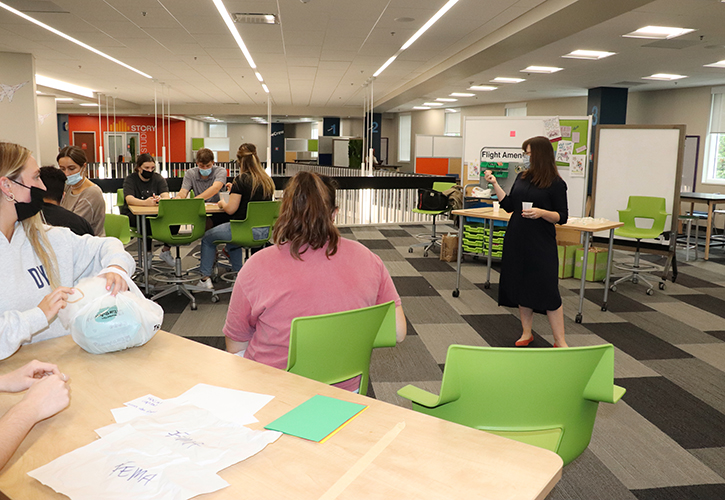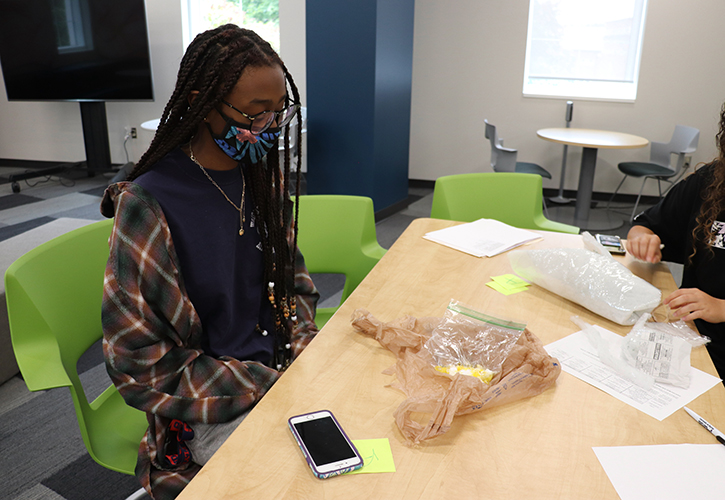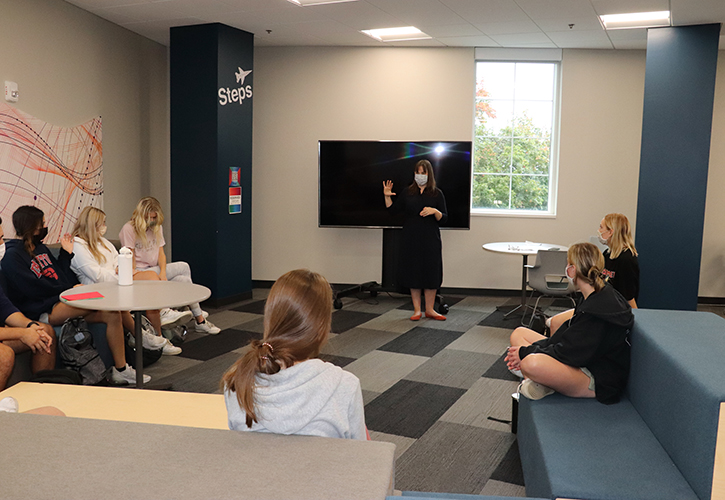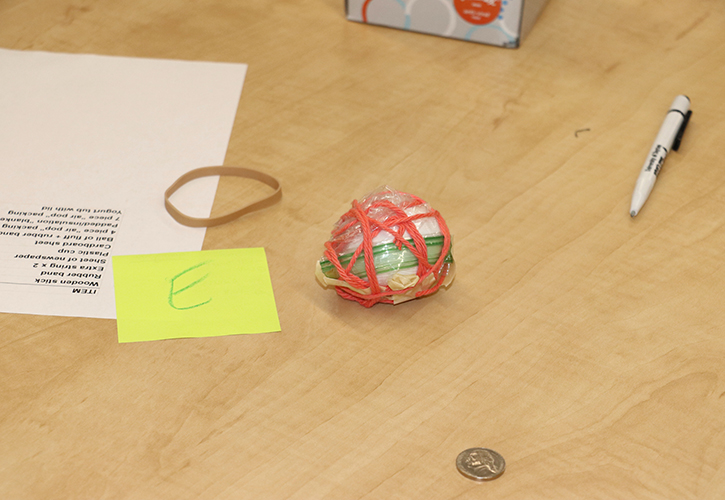College of Arts and Sciences Newsroom
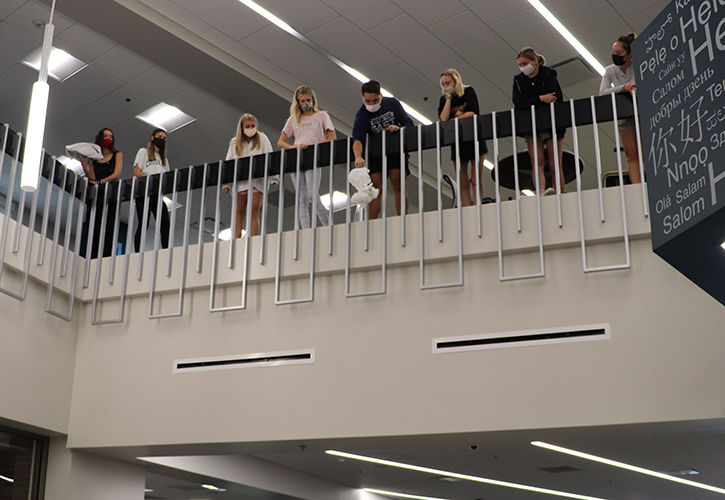
University of Dayton sociologist uses eggs, gravity to demonstrate social inequality for students
By Allison Brace ’22
University of Dayton junior Taylor Sousa dropped an egg from a second-story balcony to learn about the effects of natural disasters on people from different social classes.
Sousa, a biology major from Long Branch, New Jersey, took part in the experiential learning exercise as part of a Principles of Sociology course taught by Anya Galli Robertson, assistant professor of sociology.
By taking a familiar egg drop activity in which students design a “nest” to protect a raw egg from a high fall and adding several class-conscious twists, Galli Robertson illustrates the relationships to introduce students to the topic of social inequality and vulnerability.
Eggs were dropped from the Roesch Library Concourse D balcony to simulate a natural disaster or other event that affects groups of people. The nest symbolizes the barrier of protection available to different groups based on income, social safety nets and other public and private resources.
“The concept of social hierarchy and intersectionality were really emphasized in this activity,” Sousa said. “Each group was assigned a social class and the privileges or disadvantages each group had were visible and relatable to those in the real world.”
The introductory course is primarily offered to students who are not sociology majors. Galli Robertson said this is a great activity for students who are not social scientists to see the impact of vulnerability on different communities.
Students were split into five groups representing different income-related classes during one 50-minute class period. The groups received one egg inside of a paper bag and a price sheet listing the materials available for purchase. They used pennies to purchase cotton balls, bubble wrap, plastic containers and more to protect their egg when it was dropped from the balcony.
The top three groups were given “health insurance,” simulated as a plastic bag that could be wrapped around the egg or used as a parachute. Upper class groups could make a charitable donation to one of the lower class groups. The latter groups also could receive Federal Emergency Management Agency (FEMA) assistance.
Galli Robertson randomly assigns an egg that was soaked in vinegar overnight to make the shell very fragile. This is intended to symbolize a preexisting health condition or old age, representing the people who are most vulnerable in natural disasters or pandemics.
“My favorite outcome is when the upper class group purchases so many supplies that it actually crushes the egg,” Galli Robertson said. “This typically happens about one out of three times that the exercise is run. Alternatively, lower class teams sometimes have the most creative designs because they are forced to think harder about how to best use their resources to protect their egg.”
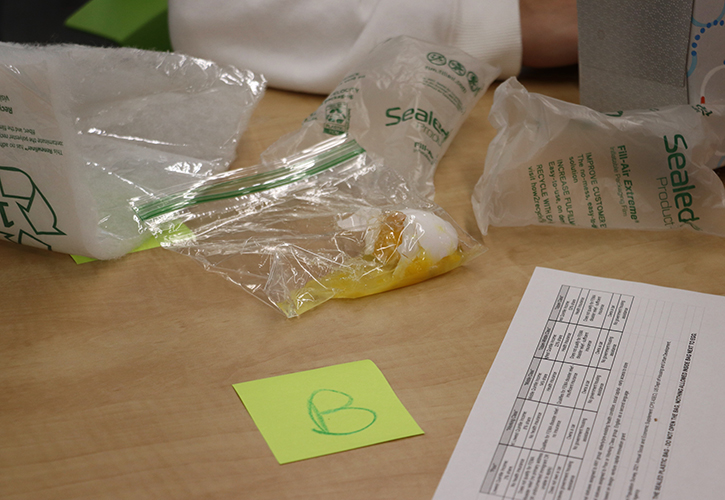
Lanie Sorg, a sophomore health science major from Dayton, said her group had the lowest amount of funding for the exercise.
“We were challenged with making the most of our scarce resources and it definitely had an impact on our egg,” Sorg said. “We were able to witness firsthand what our limited funds were able to provide us compared to other groups with more privileges and funds.”
Traditionally, students have enjoyed working hands-on to design and construct the nests, Galli Robertson said. Health sciences majors often have the opportunity to be the person who accesses the egg at the end of the experiment to decide if it survived.
“I believe the content being taught is absolutely related to my major,” Sousa said. “As a future health care provider, it is important to understand the dynamics of social hierarchy. Due to socioeconomic differences, health inequality has been one of the most significant issues in the world for a very long time. There is a staggering number of people who are unable to afford the medical attention they need and this is directly connected to the concept of social vulnerability taught within the class.”
The activity produces different results each time and shows the competition between groups for limited resources, similar to what happens during preparations for a natural disaster.
“I believe this activity will help me in my future career in health care,” Sorg said. “Without having some of the advantages examined in the lab, someone would not be able to receive proper or adequate assistance. I think this egg drop activity did an effective job in portraying what happens when you are disadvantaged in these areas and that it is incredibly difficult to get out of this cycle of oppression.”
Now in its fifth semester, the egg drop activity has found a new home in Roesch Library. Previously, eggs were dropped from a ladder in a classroom at Art Street; now they are dropped from the balcony in Concourse D, a space created in conjunction with the Institute of Applied Creativity (IACT). IACT is an academic institute training students in the creative competencies that today’s job market demands — while applying those same skills to the students’ diverse disciplines of study.
“Doing the egg drop in the Concourse D space was really great,'' Galli Robertson said. “Designed by people who work for IACT, the space was created in collaboration with students. It is meant to be a fun space that can be used for classes, but that upsets the normal boundaries of a classroom. Having access to collaborative learning spaces like this one is essential to allowing faculty to try new things.”
The session concludes with discussions about what was accomplished and what was learned about social vulnerability. Students then write a reflection about their experience that requires them to connect key terms from the course to the activity.
“The important thing to realize about inequality is that it is not additive,” Galli Robertson said. “It is really this experiential learning component that allows students to understand how these factors multiply one another. It’s much more interesting to think about it in this active way rather than just giving them a list of all of the things that contribute to vulnerability. Having the IACT Lab space in Concourse D has added ease to conducting this activity for students.”
For more information, visit the Department of Sociology, Anthropology and Social Work website.

